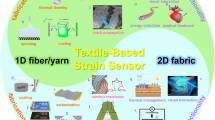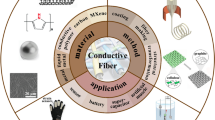Abstract
Various novel materials have been researched to improve the performance of foldable displays. The foldable display includes thin-film multilayers and the cover window for anti-scratch is located at the top, making it the most vulnerable to breakage. Siloxane hybrid polymer is considered the most promising material for anti-scratch ability and flexibility. However, information for calculating the long-term reliability of such materials is seriously lacking. This paper suggests a method to predict the mechanical reliability of a foldable display based on the principles of fracture mechanics and statistics. Mechanical properties of siloxane coating were determined using two-point bending test that is non-contact test method suitable for mechanical test of thin films. The elastic moduli and Weibull characteristic strength of the polymer were obtained from the two-point bending test. Stress corrosion susceptibility parameter by subcritical crack growth was determined by measuring the fracture strain at various faceplate velocity conditions. Using Weibull characteristic strength and stress corrosion susceptibility parameter, the long-term reliability of the foldable display was predicted under various curvatures. The suggested method can be used to evaluate the long-term reliability of foldable displays more accurately.









Similar content being viewed by others
References
Koo, J. H., Kim, D. C., Shim, H. J., Kim, T. H., & Kim, D. H. (2018). Flexible and stretchable smart display: Materials, fabrication, device design, and system integration. Advanced Functional Materials, 28(35), 1801834. https://doi.org/10.1002/adfm.201801834
Shi, S., Li, Z., Tsai, P., Dong, L., Wang, D., Shi, Y., et al. (2020, August). 56‐1: Invited paper: Research on commercial foldable AMOLED and relevant technologies. In SID symposium digest of technical papers (Vol. 51, No. 1, pp. 826–829). https://doi.org/10.1002/sdtp.13997
Jia, Y., Liu, Z., Wu, D., Chen, J., & Meng, H. (2019). Mechanical simulation of foldable AMOLED panel with a module structure. Organic Electronics, 65, 185–192. https://doi.org/10.1016/j.orgel.2018.11.026
Kim, Y. H., Choi, G. M., Shin, D., Kim, Y. H., Jang, D., & Bae, B. S. (2018). Transparent urethane-siloxane hybrid materials for flexible cover windows with ceramic-like strength, yet polymer-like modulus. ACS Applied Materials & Interfaces, 10(49), 43122–43130. https://doi.org/10.1021/acsami.8b18141
Zhang, K., Huang, S., Wang, J., & Liu, G. (2019). Transparent omniphobic coating with glass-like wear resistance and polymer-like bendability. Angewandte Chemie, 131(35), 12132–12137. https://doi.org/10.1002/ange.201904210
Chansomwong, K., Kim, Y. H., Lee, H., & Bae, B. S. (2020). Facile preparation of wear-resistant and anti-fingerprint hard coating with chemisorption of fluorosilane by simple wet coating. Journal of Sol-Gel Science and Technology, 95(2), 447–455. https://doi.org/10.1007/s10971-020-05294-z
Choi, G. M., Jin, J., Shin, D., Kim, Y. H., Ko, J. H., Im, H. G., et al. (2017). Flexible hard coating: Glass-like wear resistant, yet plastic-like compliant, transparent protective coating for foldable displays. Advanced materials, 29(19), 1700205. https://doi.org/10.1002/adma.201700205
Bae, B. S., Choi, G. M., Kim, Y. H., Kim, Y. H., & Ko, J. H. (2017, May). 17‐2: Invited paper: Flexible hard coating (Flex9H®) for Foldable display cover plastic film. In SID Symposium digest of technical papers (Vol. 48, No. 1, pp. 215–217). https://doi.org/10.1002/sdtp.11665
Gulati, S. T. (1996, November). Design considerations for mirror materials. In Advanced materials for optical and precision structures (Vol. 2857, pp. 2–11). International Society for Optics and Photonics. https://doi.org/10.1117/12.258286
Shiue, Y. S., & Matthewson, M. J. (2001). Stress dependent activation entropy for dynamic fatigue of pristine silica optical fibers. Journal of Applied Physics, 89(9), 4787–4793. https://doi.org/10.1063/1.1361245
Ambrico, J. M., & Begley, M. R. (2002). The role of initial flaw size, elastic compliance and plasticity in channel cracking of thin films. Thin Solid Films, 419(1–2), 144–153. https://doi.org/10.1016/S0040-6090(02)00718-6
Andersons, J., & Leterrier, Y. (2005). Advanced fragmentation stage of oxide coating on polymer substrate under biaxial tension. Thin Solid Films, 471(1–2), 209–217. https://doi.org/10.1016/j.tsf.2004.07.007
Leterrier, Y., Mottet, A., Bouquet, N., Gilliéron, D., Dumont, P., Pinyol, A., et al. (2010). Mechanical integrity of thin inorganic coatings on polymer substrates under quasi-static, thermal and fatigue loadings. Thin Solid Films, 519(5), 1729–1737. https://doi.org/10.1016/j.tsf.2010.06.003
Abdallah, A. A., Bouten, P. C. P., Den Toonder, J. M. J., & De With, G. (2011). Buckle initiation and delamination of patterned ITO layers on a polymer substrate. Surface and Coatings Technology, 205(8–9), 3103–3111. https://doi.org/10.1016/j.surfcoat.2010.11.025
Matthewson, M. J. (2006, May). Strength-probability-time diagrams using power law and exponential kinetics models for fatigue. In Reliability of optical fiber components, devices, systems, and networks III (Vol. 6193, p. 619301). International Society for Optics and Photonics. https://doi.org/10.1117/12.669254
Matthewson, M. J., Kurkjian, C. R., & Gulati, S. T. (1986). Strength measurement of optical fibers by bending. Journal of the American Ceramic Society, 69(11), 815–821. https://doi.org/10.1111/j.1151-2916.1986.tb07366.x
Guan, Q., Laven, J., Bouten, P. C., & de With, G. (2013). Subcritical crack growth in SiN x thin-film barriers studied by electro-mechanical two-point bending. Journal of Applied Physics, 113(21), 213512. https://doi.org/10.1063/1.4809542
Gulati, S. T., Westbrook, J., Carley, S., Vepakomma, H., & Ono, T. (2011, June). 45.2: Two point bending of thin glass substrate. In SID symposium digest of technical papers (Vol. 42, No. 1, pp. 652–654). Oxford: Blackwell Publishing Ltd. https://doi.org/10.1889/1.3621406
Ratnaparkhi, M. V., & Park, W. J. (1986). Lognormal distribution-model for fatigue life and residual strength of composite materials. IEEE transactions on reliability, 35(3), 312–315. https://doi.org/10.1109/TR.1986.4335440
Liao, L., & Köttig, F. (2014). Review of hybrid prognostics approaches for remaining useful life prediction of engineered systems, and an application to battery life prediction. IEEE Transactions on Reliability, 63(1), 191–207. https://doi.org/10.1109/TR.2014.2299152
Tan, X., & Xie, L. (2018). Fatigue reliability evaluation method of a gear transmission system under variable amplitude loading. IEEE Transactions on Reliability, 68(2), 599–608. https://doi.org/10.1109/TR.2018.2864202
Zok, F. W. (2017). On weakest link theory and Weibull statistics. Journal of the American Ceramic Society, 100(4), 1265–1268. https://doi.org/10.1111/jace.14665
Padgett, W. J. (1998). A multiplicative damage model for strength of fibrous composite materials. IEEE Transactions on Reliability, 47(1), 46–52. https://doi.org/10.1109/24.690901
Meyers, M. A. (2009). Mechanical behavior of materials (2nd ed.). Cambridge Univ. Press.
Thomas, W. F. (1958). Strength of glass fibres. Nature, 181(4614), 1006–1006. https://doi.org/10.1038/1811006a0
France, P. W., Paradine, M. J., Reeve, M. H., & Newns, G. R. (1980). Liquid nitrogen strengths of coated optical glass fibres. Journal of Materials Science, 15(4), 825–830. https://doi.org/10.1007/BF00552090
Gupta, P., Üçel, İB., Gudmundson, P., & Olsson, E. (2020). Characterization of the constitutive behavior of a cathode active layer in lithium-ion batteries using a bending test method. Experimental Mechanics, 60, 847–860. https://doi.org/10.1007/s11340-020-00613-5
Briscoe, B. J., Fiori, L., & Pelillo, E. (1998). Nano-indentation of polymeric surfaces. Journal of Physics D: Applied Physics, 31(19), 2395. https://doi.org/10.1088/0022-3727/31/19/006
Saha, R., & Nix, W. D. (2002). Effects of the substrate on the determination of thin film mechanical properties by nanoindentation. Acta Materialia, 50(1), 23–38. https://doi.org/10.1016/S1359-6454(01)00328-7
Rondinella, V. V., & Matthewson, M. J. (1993). Effect of loading mode and coating on dynamic fatigue of optical fiber in two-point bending. Journal of the American Ceramic Society, 76(1), 139–144. https://doi.org/10.1111/j.1151-2916.1993.tb03699.x
Zhou, M., Liu, Y., Huang, R., Cao, W., Jing, X., & Hwang, J. (2021, August). P‐13.2: Optimizing pad bending structure based on numerical simulation to prevent metal line crack. In SID symposium digest of technical papers (Vol. 52, pp. 1016–1018). https://doi.org/10.1002/sdtp.15359
Nath, M. M., & Gupta, G. (2019, August). Modeling the mechanical performance of bendable display under cyclic loading. In 2019 IEEE international flexible electronics technology conference (IFETC) (pp. 1–5). IEEE. https://doi.org/10.1109/IFETC46817.2019.9073716
Ha, M. H., Choi, J. K., Park, B. M., & Han, K. Y. (2021). Highly flexible cover window using ultra-thin glass for foldable displays. Journal of Mechanical Science and Technology, 35(2), 661–668. https://doi.org/10.1007/s12206-021-0126-y
Kim, M. J., Ryu, H. S., Choi, Y. Y., Ho, D. H., Lee, Y., Tripathi, A., et al. (2021). Completely foldable electronics based on homojunction polymer transistors and logics. Science Advances. https://doi.org/10.1126/sciadv.abg8169
Author information
Authors and Affiliations
Corresponding author
Additional information
Publisher's Note
Springer Nature remains neutral with regard to jurisdictional claims in published maps and institutional affiliations.
Rights and permissions
Springer Nature or its licensor holds exclusive rights to this article under a publishing agreement with the author(s) or other rightsholder(s); author self-archiving of the accepted manuscript version of this article is solely governed by the terms of such publishing agreement and applicable law.
About this article
Cite this article
Kim, Mg., Kim, Ym. & Han, Sy. Mechanical Reliability Prediction of Foldable Displays Using Subcritical Crack Growth in Siloxane-Based Cover Window by Two-Point Bending Test. Int. J. Precis. Eng. Manuf. 23, 1301–1313 (2022). https://doi.org/10.1007/s12541-022-00702-6
Received:
Revised:
Accepted:
Published:
Issue Date:
DOI: https://doi.org/10.1007/s12541-022-00702-6




